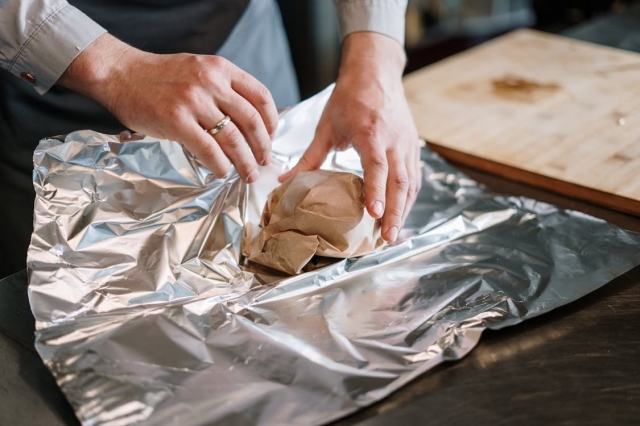“Oh, you manage an online business. That must be easy, right?”
The answer to this innocent query would be a vehement no.
Running an online store is no easy business. There are many hats to juggle and plenty of things to take care of. There is a slick and tidy e-commerce store to maintain. Precise projection of inventory levels is a must to avoid heavy losses. You also need to engage in innovative, creative marketing to keep the orders flowing. And one of the hardest parts of the job is often the last one: packaging and shipping. Packaging can often be a double-edged sword. Done well, it protects your products, speeds up dispatch and creates a great first impression when your customer opens their parcel. Done poorly, it can lead to broken goods, complaints and costly returns.
The goal of a good packaging strategy should be to build a repeatable packaging workflow. Something that works every time, whether you are sending five orders a week or five hundred. Below is a 5 step playbook that an online business of any size can follow to have manage orders like a packaging wizard:
Step 1: Right Sizing Your Packaging
The first decision is always choosing the right pack. Oversized cartons increase your shipping costs, while flimsy bags risk damage in transit. The key is to match the packaging size to the product.
1. Satchels
Satchels are best suited for soft goods such as clothing, fabric or textiles. They are lightweight, flexible and affordable, which makes them a cost-effective choice for items that are not fragile or bulky.
2. Padded Mailers
Padded mailers are ideal for smaller items that need light protection, such as books, electronic accessories or cosmetics. They offer a balance between affordability and cushioning, keeping products safe without the need for a full box.
3. Mailer Boxes
Mailing boxes are the most reliable option for fragile, heavy, or oddly shaped products that need structure and strength. Sturdy mailing boxes protect against crushed corners, impacts during transit, and keep your goods secure until they reach the customer.
Keep in mind Australia Post's cubic weight rules. If your box is larger than it needs to be, you will pay more to ship it, even if it is light. Choosing the smallest safe option keeps costs down.
Step 2: Cushioning for Protection
To minimise the risk of damage and returns, proper cushioning is a must.
- Paper or honeycomb wrap: This is more sustainable, is easy to recycle and is quite effective for general use.
- Bubble wrap: It's a safe choice for highly fragile items such as glassware.
- Foam inserts: They are best for precision items like electronics or ceramics as they stop movement completely.
A general rule of thumb is to keep products from moving around in the box. Shake the package gently before sealing. If it rattles, add more filler.
Step 3: Seal it Properly
Proper sealing is as important as cushioning. There are plenty of tape types on the market so choose as per your needs and requirements. Acrylic tape is often fine for light cartons, although it can lose its grip in colder storage conditions. Hot melt tape has a stronger adhesive and is better suited for heavier cartons or items that may shift around. Water-activated tape, sometimes called gummed tape, bonds directly with the cardboard and is particularly effective because it is difficult to peel off without leaving evidence of tampering.
The way you apply the tape also carries weight (both literally and figuratively). The H-taping method is considered best practice: applying tape along the centre seam and across both side seams of the carton, creating an “H” shape. This ensures all openings are sealed, preventing the box from popping open and keeping your products secure until they arrive
Step 4: Label Appropriately
Clear, accurate labelling reduces delays and ensures compliance with carrier rules.
- Always place the shipping label on the largest surface.
- Avoid placing labels over seams or tape.
- Use FRAGILE or HANDLE WITH CARE stickers if necessary.
- For items with batteries or hazardous contents, follow the carrier's specific requirements and apply the right warning labels.
- Barcodes must be scannable. If you are printing at home, check that the ink does not smudge and that the label is straight.
Following these best practices can ensure smooth delivery without any hiccups on the way.
Step 5: Stay Compliant and Consistent
In Australia, carriers have clear packaging and labelling requirements, so staying compliant is just as important as keeping your process consistent. A good way to make sure nothing gets missed is to build a repeatable checklist for whoever is doing the packing. Start by selecting the right-sized satchel, mailer or mailing box to avoid excess cubic weight charges. Add the correct cushioning based on the fragility of the product, then seal cartons securely using the H-taping method. Labels should be attached in a way that is easy to scan, and any special notices like FRAGILE or lithium battery warnings should be clearly visible. Finally, double-check that the package meets your carrier's rules, whether you are sending through Australia Post, EBPAK or some other courier service. By following the same process every time, your workflow becomes more efficient, mistakes are minimised, and you can be confident your parcels will arrive safely and in line with regulations.
Good packaging can save you heaps of money and also avoid unnecessary returns. In fact, great reliable delivery can be a real moat to attract customers for the ultimate unboxing experience.






